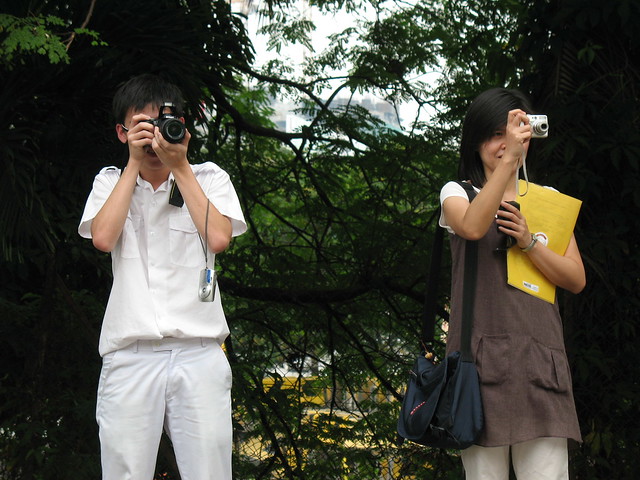Question 12. What are the disadvantages of digital imaging?
The vast majority of digital images continue to be reworkings of past strategies that do not articulate any new ideas. Manufacturers promote the fantasy that all it takes to be an artist is just a few clicks of a mouse or applying a preprogrammed filter. The challenge remains open: to find a native syntax for digital imaging. At the moment, this appears to be one that encourages the hybridization and commingling of mediums.
On the practical side, having a tangible negative allows one to revisit the original vision without worrying about changing technology. One could still take a negative that William Henry Fox Talbot made to produce his first photographic book, The Pencil of Nature (1843-1846), and make a print from it today. In 150 years will there be a convenient way for people to view images saved only as digital files? Or will they be technically obsolete and share the fate of the 8-track audio tape or Beta video system which most people can no longer access?
One does not have to be a Luddite to continue making analog prints. One reason to keep working in a variety of analog processes is that digital imaging tends to physically remove the maker from the photographic process. This is not a romantic notion or a nostalgic longing for the ways of the past. What often is lost is the pure joy of the atmospheric experience of being along in a special darkroom with an orange glowing light, the exhilaration of being physically creative as your body and mind work together to produce a tangible image. The making of an analog photograph is a haptic experience that does not occur while one is seated in a task chair, but involves the smell of chemicals, the sensory experience of running water as an image emerges in the developing tray from a white nothingness. A silver-based photograph never looks better than when it is glistening wet from its final wash. Ans regardless of how long one has been making prints in the darkroom, there is still that small thrill that your photograph "has come out" and now can have a life of its own.
R. Hirsch & J. Valentino (2001)
150 年之后(想一想为什么是 150 这个数字),我想数码相机将成为摄影师追求的复古品,就好像现在的我们收集旧相机、旧镜头和保留胶卷摄影这样。思考未来,我们可以看清现在的摄影趋势。
不管你用什么款式的数码相机,你的动作和百年前的摄影师一样——举起相机、按下快门。分别只是在于事后不必冲洗就能看见图像。那么认真想想,数码摄影真的带来了很多影响吗?除了让人人能举起相机拍照,还有什么重大影响吗?数码摄影并没有创新——是,在科技上我们确实进步了很多很多,但是艺术方面呢?
摄影已经进入瓶颈很久了,只是没有人要大声说出来。
会用胶卷摄影的人形成自己的群体,继续他们的艺术创作,但是这些技术自古以来就没什么变化了;利用数码器材的人形成另一个群体,继续占领摄影界的大部分领地,但是他们的意见只在自己领地里交换着,没有能力购买器材或没有人脉的新手无法融入(而我将会在 Question #13 讨论 Hirsch & Valentino 如何产生专业摄影师和新手的代沟);“普通数码用户”则夹在中间,什么都不用理,快乐地分享着日常上的照片。
 |
| 回顾旧照。2008。Canon PowerShot A630。Cropped。 |
真正快乐的摄影师也许就是这些“普通用户”。150 年后,你的照片还会有价值吗?会不会很讽刺地,那些“普通用户”无意拍下的照片被未来人重视,而那些高昂摄影器材或者认真构图拍出的照片却被遗忘?现代人人手上有好相机,但摄影师和被摄对象之间的距离却越来越远。
想到这些,为什么我们还要认真地按下快门?古老的技术,能不能在现代摄影师的手中复活?新颖摄影工具的躯体,能不能被现代摄影师灌入灵魂?既然 150 年后的人会认为我们手上的数码相机非常值得收藏,那我们为什么不专心利用手上的相机、而跑去收藏旧时的 Nikon FM2 或者 Polaroid SX-70?现代更有趣的现象是,我们先进的数码相机里面有模仿胶卷或怀旧的效果。怀旧只能满足个人对快乐和兴趣的欲望,对摄影的发展却没有什么帮助。
你可以把上述统统看作废话,但是你不能不认真探讨一个问题:为什么摄影?


0 comments:
Post a Comment